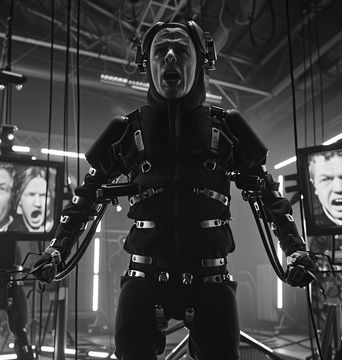SAG-AFTRA DECLARES VIDEO GAME STRIKE OVER AI ABUSE, MAJOR COMPANIES IMPACTED AS UNION PRESSES FOR PROTECTIONS

As we witness our digital world evolving, there is a bubbling undercurrent that we often fail to address – the clash between artificial intelligence (AI) and the human workforce. The Screen Actors Guild - American Federation of Television and Radio Artists (SAG-AFTRA), a prominent union representing actors and media professionals, has declared a strike of all video game work under its Interactive Media Agreement. This move challenges the rapid technological advancements in the video game industry and demands stronger AI protections for its members.
The strike, set to affect multiple roles including voice and motion capture actors, is slated to impact gaming giants such as Activision Blizzard, EA, and WB Games. SAG-AFTRA’s decision comes on the back of protracted failed negotiations stretching over a year and a half, putting the spotlight squarely on the contentious issue of AI and its effect on job security.
Despite the video game producers asserting that they have reached an agreement on most aspects, including wage hiking and safety measures, and offered AI protections, SAG-AFTRA's strike indicates the complexity of the issue at hand. A broad range of activities will be barred during the strike, with acting, singing, dancing, and motion capture being the major casualties.
This strike isn’t the union’s first battle against the march of AI. Just last year, SAG-AFTRA authorized a similar step due to apprehensions that AI technology could eventually replace human performers. It's clear that the union is gearing up for a long battle against technological developments that threaten the livelihood of its members.
The union, however, is aware of the increasing influence of AI in the video game business. Previously, SAG-AFTRA had entered an agreement with Replica Studios to create digital replications of actors' voices, indicating its willingness to adapt to new technology, albeit with the right checks and balances in place.
As the fight for superior AI protections continues, it is imperative to assess the far-reaching ramifications of technological advancements on the human workforce, not just in the gaming industry, but across the board. The SAG-AFTRA strike underlines the necessity for a balanced approach that allows technological strides to coexist with robust job security. The outcome of this resistance will shape the interactions between AI and the workforce, charting the future of working conditions in the rapidly expanding and evolving video game industry.
As the discourse around the potential risks and rewards of AI continues to unfold, this strike stands as a stark reminder that the dialogue is no longer theoretical – it’s here, it’s now, and it’s crucial. The future has a way of arriving unannounced, and it would appear that the future of the video game industry, and indeed the wider scope of AI’s integration into our industries, may be shaped faster, and more definitively, than many of us expected.